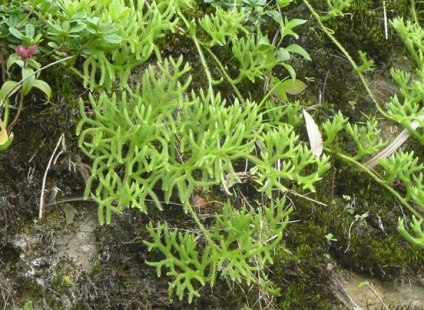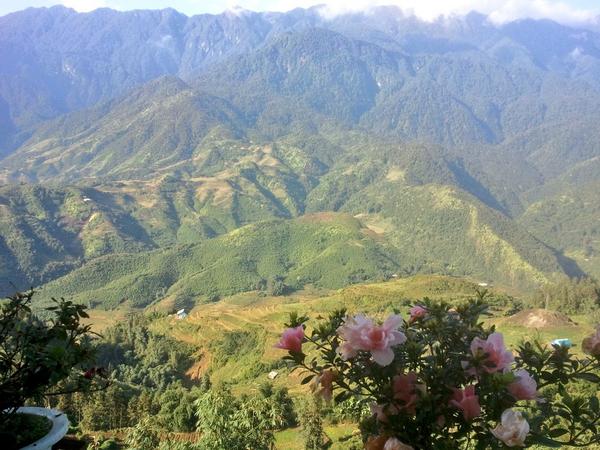While Hanoi is almost always hot and humid, the North Western parts of Vietnam, close to the borders with China are mountainous, offering a temperate climate with occasional snow and frosts.

To visit the small and touristy town of Sapa, the commonest way (but not easiest way, as we learned… afterwards!) is to take a night train from Hanoi, arriving in the early hours in the industrial city of Lao Cai. 9 long hours of extreme air conditioning, non-existent suspensions and snoring neighbours later, we reached Lao Cai where a driver was waiting to take us to Sapa (only 30 min drive).
We met with our local guide, Uoc Le Huu (I’m sure the name will ring a bell to some 🙂 ), and after a hearty meal, set up for an afternoon trek around Sapa. Because of road works, we couldn’t reach our starting point by car, so had to walk along the road…
Even walking along a road proved full of surprises, since we were basically walking along a natural green wall. Highlights included several species of Rubus, gesneriads and melastomes, spectacular lycopodes, Pyrrosia ferns and even dwarf Rhododendron.
After a brief climb, we found the starting point of the walk, a cultivated field.
Among rice, cabbages and artichokes, there were trellis crumbling under the weight of Su Su (Sechium edule), a bland but nourishing crop used in many tropical countries.
Fabulous trees can be spotted along the trek, such as Magnolia sapaensis (only brought back to the UK and described in 2011! See The Plantsman article), and the huge-leaved Schefflera macrophylla, a small tree which is quite common in the area. Both can be grown in the UK…
In the forests around Sapa, local ethnic groups such as H’mong and Dzao grow cardamom (Amomum tsaoko), a very large ginger. Here’s our guide Uoc surrounded by cardamom plants:
On a rocky slope, I spot a yellow Rhododendron (possibly R. emarginatum) and an Aeschynanthus.
The walk yields more large-leaved surprises, such as an Aesculus with leaves twice as big as my head; Exbucklandia tonkinensis with its uniquely shaped leaves; an Impatiens with yellow flowers; and interesting Begonia.
Over a just a few hours, we also spotted a fantastic diversity of caterpillars:
And some really cool insects, such as this leaf-mimicking treehopper, whose back patterns cleverly imitate leaf veins:
Fog and night come fast in the Vietnamese mountains, so we had to start our descent back to Sapa (a few bamboos may have been hurt in the process!).
Sapa in itself is a very touristy town, with dozens of backpackers hostels, restaurants and shop selling fake branded outdoor clothes. We were very lucky to stay in a hotel slightly outside of the tourist center, called Sapa View. By day:
…and by night:
Tasty, isn’t it? Next we embark on a journey up the Fansipan (or Phan Xi Păng), the highest mountain in Vietnam, to discover the even richer flora of that area…






























1 Comment